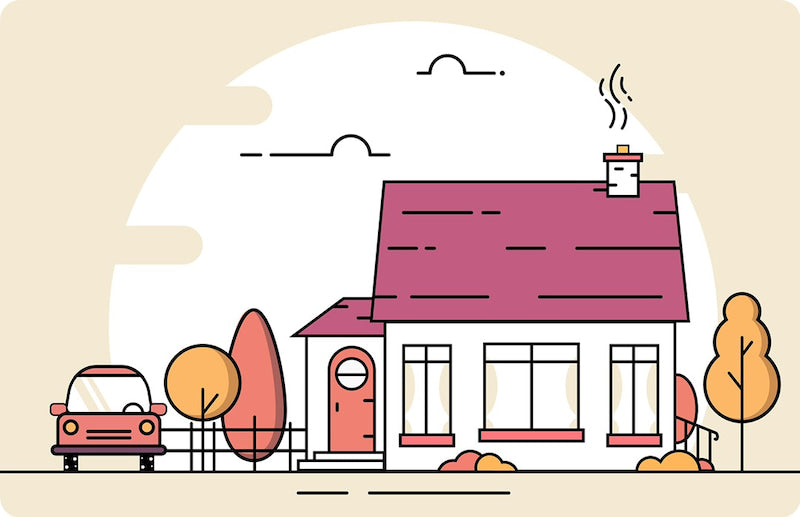I'm Aoi Hashima , an occupational therapist working in Saga Sumai and Fukuoka.
It's been three years since the Covid-19 crisis, but our hospital has yet to make repairs to the homes of stroke patients.
We may ask your family to take pictures of your home, and if you have a care manager with whom you have been associated for a while, we may ask you for information about the type of home you live in.
When a patient is discharged home, family members may be asked about their concerns.
With visits restricted due to the Covid-19 crisis, I think it is difficult to grasp the physical state after a stroke and imagine what life will be like after being discharged from the hospital.
According to the physical condition of the parties, we will talk about the main points of home decoration in detail, and ask about the situation of the family at home.
This time, I wanted to write a checkpoint about home improvement, and because of the corona disaster, I thought it should be specifically stated.
Places visited and distance traveled
We'll check the places in your home where you spend the most time and the distance you travel.
A place that is not in use is rarely remodeled.
I think doing this inspection will be the first step in considering where home remodeling is possible.
What is your favorite place in your house?
Find out where you spend most of your time at home.
You probably spend most of your time sitting on a chair at the dining table, or sitting cross-legged on a tatami in a Japanese-style room.
Also, you may initially spend your time in bed or on the couch in front of the TV.
Where you normally stay at home is a comfortable place for you, and you are often there with a purpose, it will be a hint.
How far is the bedroom from the bathroom?
Checking the distance from the bedroom to the toilet is a major factor in determining whether your current physical abilities, especially your walking ability, match your current lifestyle.
For example, if you can walk 20m along the handrails and walls of the recovery room, or if you are independent, you can walk after you leave if your bedroom is within 20m of the toilet. Hospital. Easier to drain in the toilet.
This will help you decide whether to install grab bars in the hallway from the bedroom to the toilet, or in the toilet.
If you use parallel bars in the recovery room, you can walk about 5m. If the distance from the bedroom to the toilet is 20m, we will consider how to use the toilet after returning home.
We will consider moving the bedroom closer to the toilet, using a wheelchair instead of walking to the toilet, and placing a portable toilet by the bed.
What is the distance from the entrance to the bedroom or living room?
Checking the distance from the entrance to the bedroom or living room is a tip to consider transportation when using outpatient services such as outpatient and day care, as well as transportation-related home improvements.
If it is difficult to walk very far, we can consider whether it is possible to use a wheelchair to move from the entrance to the bedroom, or whether we can ensure the width of the corridor that allows the wheelchair to move.
potential obstacles
After knowing where and how far you've been, we examine your current physical condition and what you can and cannot do, and examine possible obstacles in your life.
step
We will examine what steps are on the flow line of the movement of people.
Check not only the inside, but also the area around the entrance.
Master the location and height of stiles, steps, thresholds, etc.
If it's possible to shower at home, check the steps at the bathroom entrance.
Hinged door/Sliding door
Check if the bedroom or toilet door is open or closed.
Sliding doors are easy to use when in a wheelchair or on foot.
For hinged doors, take a step back toward the door, or lower the wheelchair backwards.
Entrance/Corridor Width
When moving in a wheelchair, check the width of doorways and hallways.
Compact wheelchairs are available, but if you use a regular wheelchair, make sure doorways and hallways are at least 90cm wide.

Source: Basic Dimensions
Also, when using a walking stick, it is said that it is easier to pass 90 cm or more with one stick, and through a doorway or corridor of 120 cm or more with two sticks. 
Source: Basic Dimensions
At the end
This time, I wrote a checkpoint about home improvement.
After a stroke, we offer a variety of supports so you can leave the hospital with peace of mind.
Due to the Covid-19 crisis, I cannot go directly to the patient's home, but when considering the checkpoint for home improvement, I asked his family and the care manager to share information such as photos to support discharge.
I believe that once the specific support methods for home discharge are clear, it will be easier to decide on the details of recovery.
I want to keep thinking about what to do at home so I can provide solid support even during the corona crisis.
Citations/references
1) Ministry of Land, Infrastructure, Transport and Tourism: Basic Dimensions
https://www.mlit.go.jp/common/001392062.pdf
☆*:.。. Thank you for reading to the end.。.:*☆
ーーーーーーーーーーーーーーーーーーーーーーー
This article was reprinted on September 12 , 2022 on Aoi Hashima's blog " Stroke Rehabilitation Longevity Consultation Center " .

